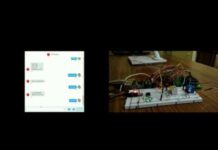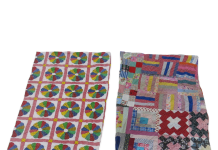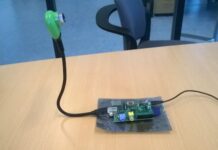
When we think of automation, we tend to think of machines taking steps without human intervention. For example, I’ve programmed my porch lights to come on whenever my garage door opens after dark. This happens no matter what, even if there is a rare circumstance in which I might prefer to keep them off.
As cases such as the Boeing 737 MAX crashes make clear, we absolutely need to understand what automation will mean in a wide variety of circumstances, and figure out how we want to expose people to them. But we also need to understand what automation can’t do.
For example, one of the biggest automation-related topics today is around automobiles. Autonomous cars, after all, were forecast to be on our roads by 2020. But that is unlikely to happen. And even if we do manage to achieve high levels of automation or autonomous robots in the next few years, people will likely still be involved. For example, most self-driving car experts think that self-driving vehicles will require some sort of remote human operator that can take over in case of robot confusion.
I wrote about that recently in IEEE Spectrum after speaking with the CEO of Einride, which is testing autonomous commercial trucks. These vehicles generally require one person for every 10 trucks, and there’s an open question about what sort of structure and mechanism we’d need for the humans to monitor the trucks. Would it work over 5G networks? What happens in case of network failure? How would a truck crossing borders have the ability to phone its operator?
Outside of cars, there’s a clear trend taking place where autonomous-seeming robots being deployed to help humans are in fact little more than mechanical shells for a remote operator. The most recent example is also from IEEE Spectrum, which notes that Japanese startup Mira Robotics is renting out a laundry-folding robot. But for most of the robot’s tasks, a contractor is actually manipulating the robot.
In other words, people are renting a connected puppet optimized to fold laundry. When notified, the puppeteer comes along and inhabits the robot to handle the task. At first blush, this seems deeply weird, but in areas with high labor costs that require human downtime, it makes a ton of sense.
For example, the laundry robot operator can inhabit a robot to separate clothes and put those clothes into a washer in one home, then disengage until the washer is done. In the meantime, the operator can start loads in many other places. When the time comes to move the clothes from washer to dryer, it can circle back to the home it started in and then proceed from there to make the same rounds.
A similar logic is at play in the Einride example. Because Einride’s autonomous vehicles are electric, there’s a lot of downtime while the trucks charge. And paying a human driver to sit around and wait is a waste of money. So while one hand this model makes sense, on the other hand it also feels like a lie. Are robots going to take our jobs, or are they going to become shells that handle the most mundane tasks and ping for a remote humans’ help when they need it?
We might not even need the robotic shell. Back in 2017, Wired profiled a company called CareCoach that gives Google Nexus tablets featuring an animated dog avatar to Alzheimer’s patients. The avatar is designed to monitor — and engage with — with seniors in their homes. Behind the avatar is a real person located in Mexico, who has a number of other clients to interact with as well. And there are other companies trying to enact a similar model for more functional robots that might roam the halls of senior living facilities.
Carla Diana, a designer who has spent years building robots that work with humans, thinks that there will certainly be a role for someone she jokingly calls “the robot whisperer.” But she says that as we increasingly bring more robots and automation into our world, “humans will have to bend.”
Robots have very limited ability to perform well in generalized situations, which is why it’s such a big deal to see videos of Boston Dynamics’ Big Dog robot opening doors and climbing stairs. Generally speaking, robots can handle a few specialized tasks, such as picking up a specific item and putting it somewhere else. Merely the act of picking up a variety of different items is tough for robots to grasp. That’s why it’s hard to get a laundry-folding robot and much easier to find one that does windows.
For the near term, robotics and automation feel like a bigger threat than they might actually be for jobs. Especially when it comes to tasks that involve interaction with the physical world or caring for other people. What we’re likely to see as the sector evolves is more labor arbitrage, where people in markets where labor is cheaper teleoperate robots in higher-cost labor markets.
Or we might just see the emergence of these robot whisperers as a job of the near future.
The post Behind that automated car or robot, there’s often a person appeared first on Stacey on IoT | Internet of Things news and analysis.

































